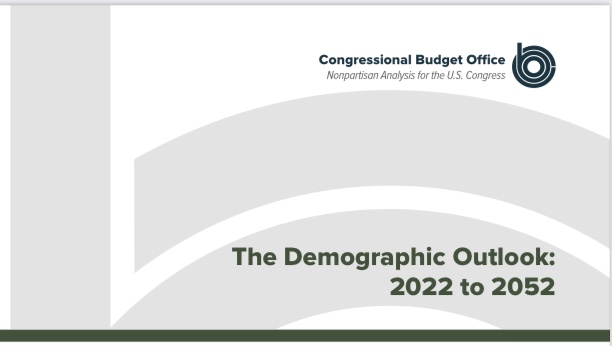The Demographic Outlook: 2022 to 2052
By Congressional Budget Office
The size of the U.S. population, as well as its age and sex composition, affect the economy and the federal budget. For example, the size of the working-age population affects the number of people employed; likewise, the size of the population age 65 or older affects the number of beneficiaries of Social Security and other federal programs.
The Congressional Budget Office projects the population in future years by projecting fertility, net immigration, and mortality. (In this report, the population is the relevant population for calculating Social Security payroll taxes and benefits, known as the Social Security area population. See Notes and Definitions for more details.)
CBO’s projections of the population over the next 30 years are subject to significant uncertainty. If rates of immigration, fertility, or mortality were higher or lower than the agency’s projections, then the projected population would be affected more in later years of the projection period than in the earlier years because differences in those rates compound in each year of the 30-year projection period.
In CBO’s projections, the population increases from 335 million people in 2022 to 369 million people in 2052. However, it grows at one-third the pace (0.3 percent), on average, from 2022 to 2052 that it did from 1980 to 2021 (0.9 percent). Over the course of the next decade, immigration accounts for about three-quarters of the overall increase in the size of the population, and the net effects of fertility and mortality account for the remaining quarter. After 2032, population growth is increasingly driven by net immigration, which accounts for all population growth in 2043 and beyond.
Read book “here”











